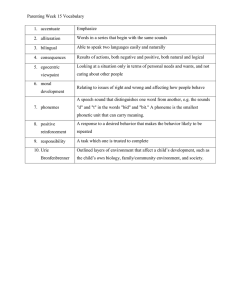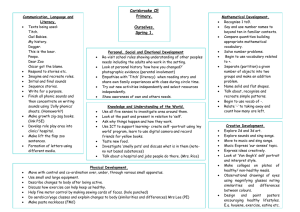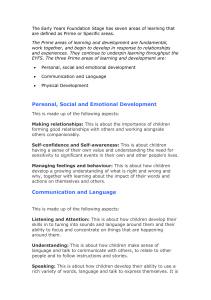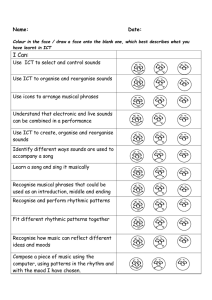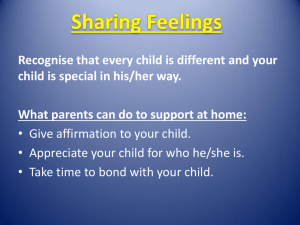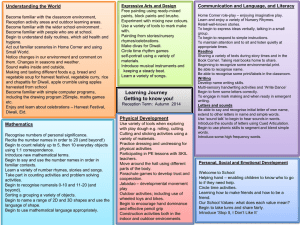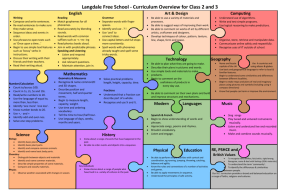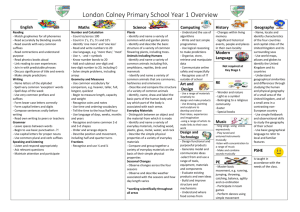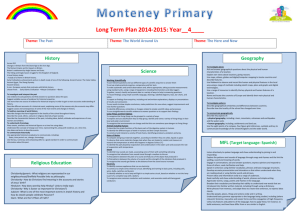Reading Workshop Years 1&2
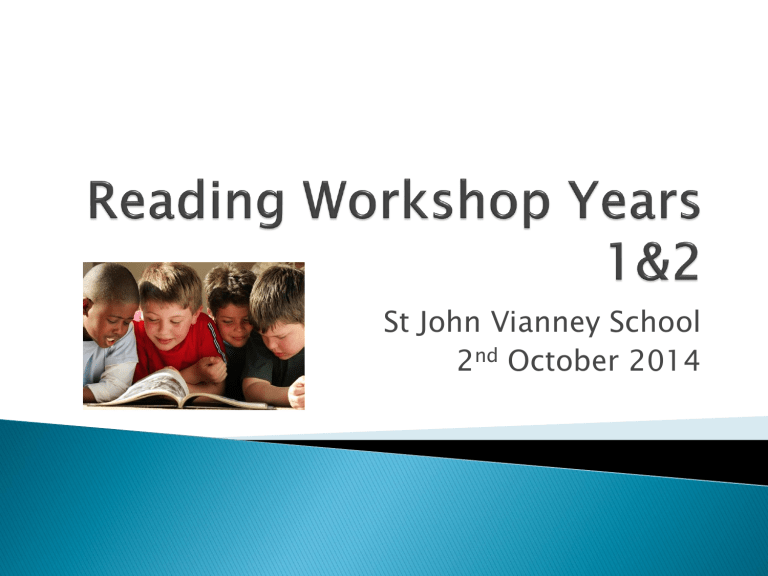
St John Vianney School
2 nd October 2014
Children learn to recognise the front and back of a book, and how to turn one page at a time.
They learn that the print runs from left to right.
They may begin to point at words as you read.
They may retell the story in their own words using the picture clues.
They learn about different types of books .
Progression of learning:
◦ Understanding the concept of words
In Nursery and Reception children begin to identify their own name in print on labels, book bags etc………
◦ Alphabetic Awareness
In the foundation stage children are taught that letters make a particular sound .
◦ Phonemic Awareness (phoneme means sound)
In the very early stages of reading children will begin to sound out the first letter of unknown words, and use them as clues.
At the most basic level, readers recognise that letters represent the sounds of spoken words. As children master each letter of the alphabet, they map these letters to the sounds they represent, a process that enables them to begin to decipher whole words.
By breaking up words into their sounds, called phonemes, and sequencing the individual sounds in their proper order, children can sound out words. For example, the word "bag" is made up of three phonemes, "buh," "aah," and "guh."
With time and practice, decoding becomes automatic for the normally progressing reader.
(It is important to remember that all children progress at different rates.)
Short Vowels
A
E
I
O
U
Long O o o___e oo ow
Long A a__e ai
___ay a eigh
Long U u u__e
Long E e ea ee e___e
___y
/OO/ oo ew ue ou
Long I i i___e ie igh
___y
/oi/ oi
Oy
◦ Word Recognition
As children are exposed to more words, they begin to recognise whole words without having to sound out individual letters.
◦ Fluency
Children start to read whole sentences, and begin to develop an awareness of punctuation.
◦ Comprehension
Children read for meaning and understanding, they will self correct if they make a mistake, and use the context to help work out an unfamiliar words.
They can answer questions about what they have read, and demonstrate a good understanding of the text.
◦
Monitoring whether a story or sentence makes sense.
◦
Decoding skills.
◦
Comprehension skills
◦
Searching for cues from context
◦
Rereading when unclear
◦
Self-correction
Midas Security Level: the standard values for this are: 3000 for Enquiry Users, 5000 for Input –
General Users, 7000 for IT / Support Staff, 9000 for
Security Officers
Item groups for initial menu: Insert the menu reference numbers to make up the User’s initial menus
“Perform Payment authorisation” and “System Routing
Officer”: set to “Y” for Users of “Funds Transfer” module whose functions involve, respectively, authorising outgoing payment messages, and “Straight Through Processing” of
Funds Transfer messages
Press Enter to confirm and display the following page.
I can decode and read the words, but what does it all mean?
What would help me to understand this?
Students! Students! Please stop skapling and listen to me. Class has begun.
What does skapling probably mean?
A) sleeping
B) talking
C) working
D) typing
Hurricanes and tornadoes are tragable . Only a very foolish person would go out during that kind of weather.
What does tragable probably mean?
A) exciting
B) dangerous
C) delirious
D) safe
What do you think will happen next?
Why do you think he/she feels like that?
Do you know what that word means?
What was your favourite part of the story? Can you explain why?
Where is this story set?
Why do you think the author wrote that in bold?
What have you learnt from this book?
If you were to ask that character a question, what would it be?
Who is........../ Why are they........../What if they........?
Reading with your child is vital. Research shows that it's the single most important thing you can do to help your child's education. It's best to read little and often, so try to put aside some time for it every day.
Think of ways to make reading fun - you want your child to learn how pleasurable books can be. If you're both enjoying talking about the content of a particular page, linger over it for as long as you like.
Books aren't just about reading the words on the page, they can also present new ideas and topics for you and your child to discuss.
Re-read your child's favourite stories as many times as your child wants to hear them, and choose books and authors that your child enjoys.
Read stories that have repetitive parts and encourage your child to join in.
Point to words as you read them. This will help your child make a connection between the words he or she hears you say and the words on the page.
Read all kinds of material – stories, poems, information books, magazine and newspaper articles, and comics.
Take your child to the library and look at interactive CD-
ROMs and the Internet, as well as books .
Buy dual-language books if English isn’t your family’s first language - you can talk about books and stories, and develop a love for them, in any language.
Look for books on topics that you know your child is interested in - maybe dragons, insects, cookery or a certain sport.
Be a good role model, your child needs to see you reading too.
